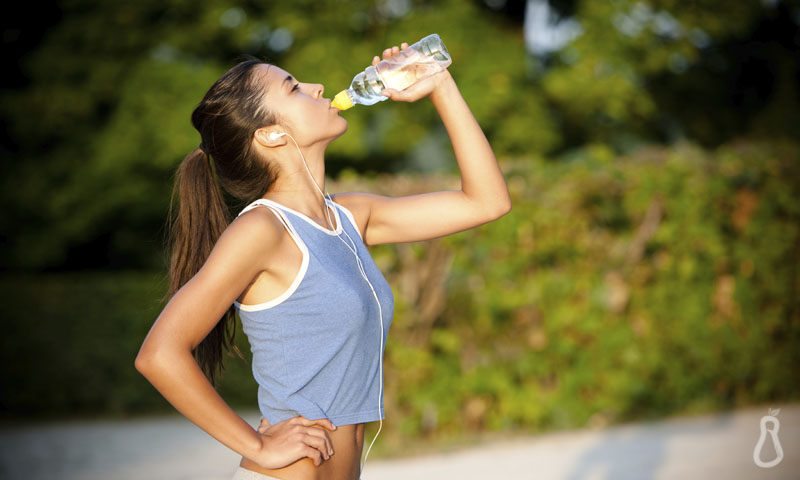How Dehydration Affects Athletic Performance
How to Determine Fluid Needs
According to sports dietitian Nancy Clark, it’s important to first calculate your sweat rate when trying to determine your individual fluid needs.
- Weigh yourself in your birthday suit before climbing
- Climb for one hour at your typical level of intensity
- Measure the fluids (in ounces) that you drink during your climb
- Weigh yourself again after climbing (also naked)
- Calculate the difference in weight
- Convert pounds to ounces (16 ounces = 1 lb)
- Add the fluids from Step #3
- Use this value as your hourly fluid guideline while climbing
- Divide your value from Step #8 by 4 to determine how much you should be drinking every 15 minutes
For example, if you weigh 140 lbs before climbing, and 139 lbs after, then you lose about 16 ounces of fluid in an hour of climbing. If you drank 16 ounces of water at the crag, then you need roughly 32 ounces of fluids per hour of exercise.
Conclusion
Forgetting to hydrate while climbing can affect more than just your mood, immune system, and brain. Dehydration can lead to decreased climbing performance in terms of both strength and endurance.
Plain water can rehydrate you for up to an hour of exercise, but after an hour, it’s best to begin replacing electrolytes with a sports drink or snack of your choice. My favorite is the raspberry Exercise Hydration Mix from Skratch Labs.
What’s your favorite way to replenish those electrolytes?

